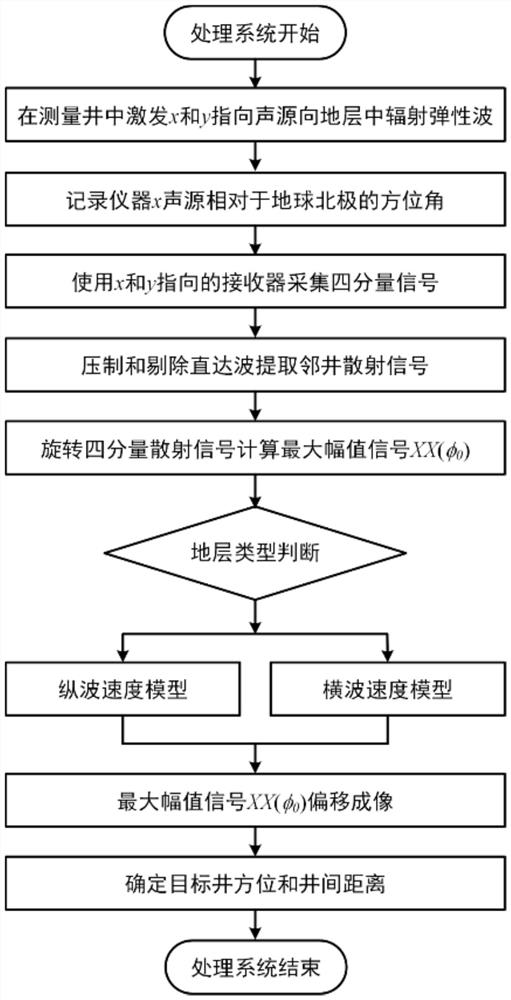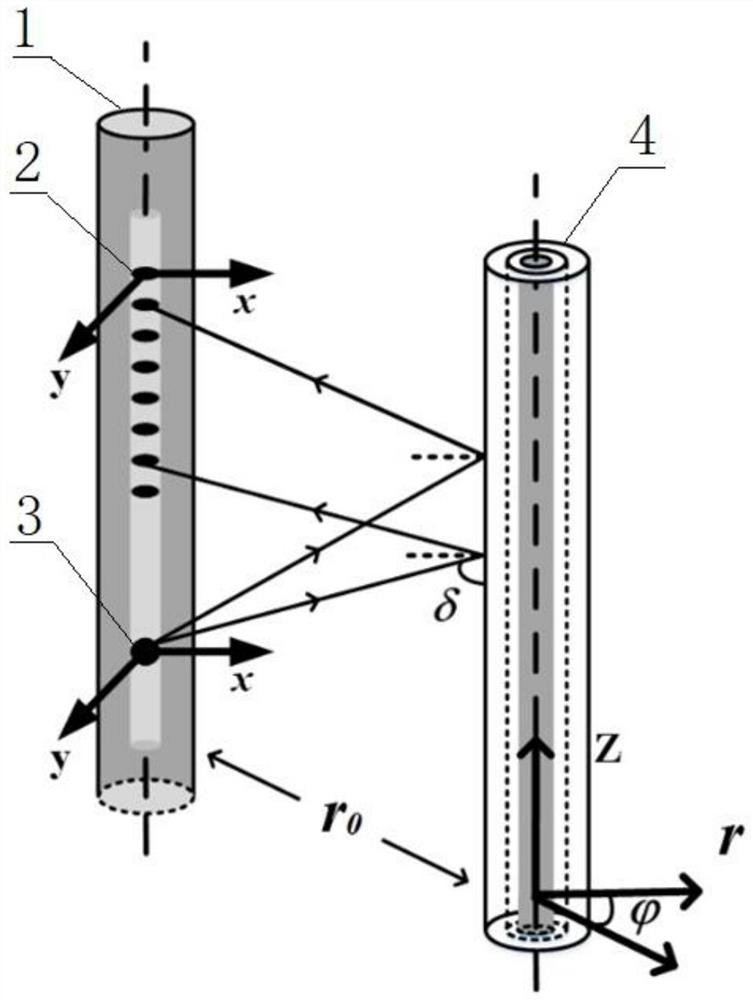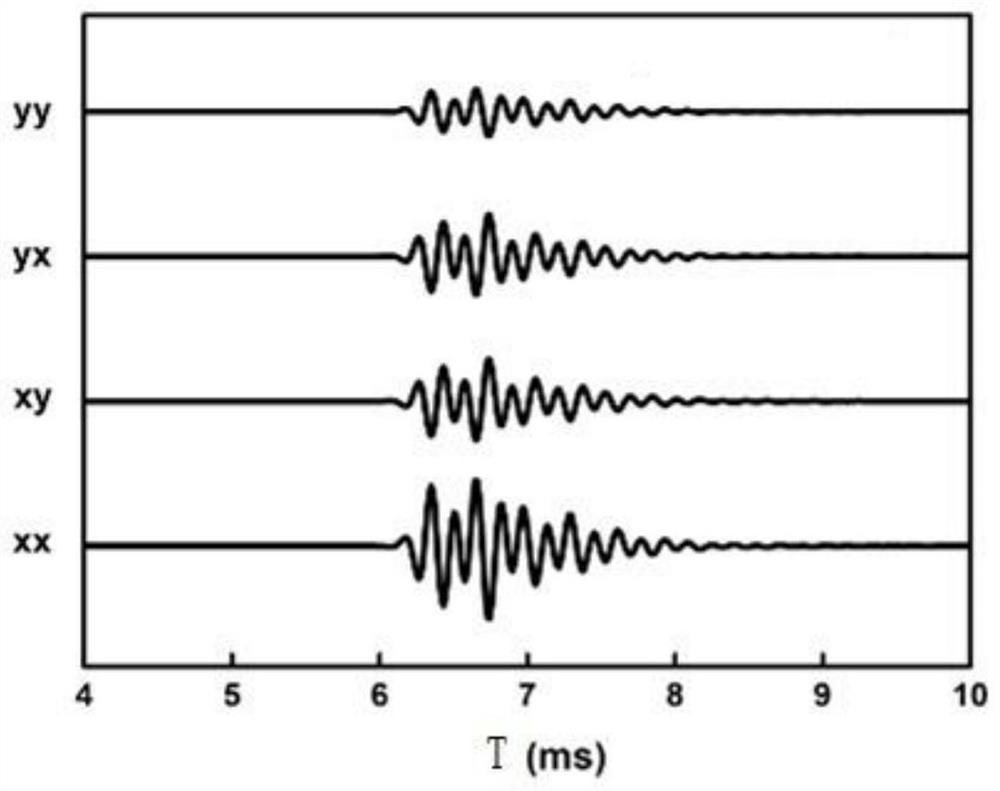A detection method for adjacent wells based on the theory of interaction between borehole and elastic wave
A detection method, a technique of elastic waves, used in seismology, geophysical surveys, measuring devices, etc. for well logging
- Summary
- Abstract
- Description
- Claims
- Application Information
AI Technical Summary
Problems solved by technology
Method used
Image
Examples
Embodiment Construction
[0030] The method of the present invention will be further described below in conjunction with the specific principle of the interaction between the borehole and the elastic wave and the detection examples of adjacent wells, so that those skilled in the art can better understand the method and implement it, but the examples given are not intended as a reference to this method. Limitations of Invention.
[0031] Step 1: Place the orthogonal dipole sound source and receiver pointing to x and y in the tool coordinate system x-y in the measurement well, and excite the sound source pointing to x and y to radiate elastic waves to the formation outside the well.
[0032] The radiation directivity of a dipole sound source is:
[0033]
[0034] Where θ is the angle between the radiation direction from the sound source to the field point and the z-axis, is the angle between the radiation direction and the orientation of the vertical plane where the z-axis is located, and the positi...
PUM
 Login to View More
Login to View More Abstract
Description
Claims
Application Information
 Login to View More
Login to View More - R&D
- Intellectual Property
- Life Sciences
- Materials
- Tech Scout
- Unparalleled Data Quality
- Higher Quality Content
- 60% Fewer Hallucinations
Browse by: Latest US Patents, China's latest patents, Technical Efficacy Thesaurus, Application Domain, Technology Topic, Popular Technical Reports.
© 2025 PatSnap. All rights reserved.Legal|Privacy policy|Modern Slavery Act Transparency Statement|Sitemap|About US| Contact US: help@patsnap.com



